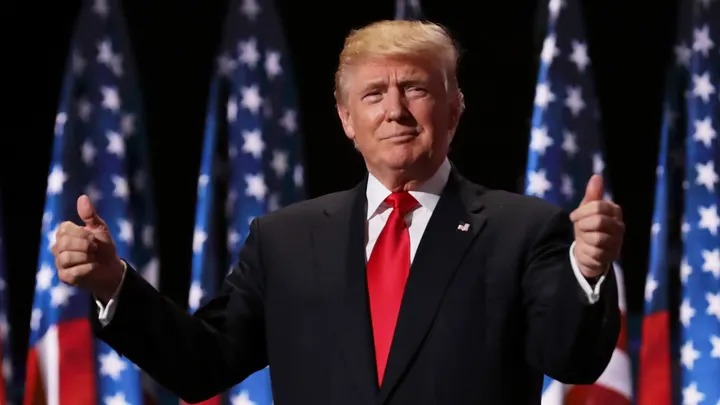
Former President Donald Trump has rolled out his “America First” trade policy that focuses on rewarding domestic production, while imposing tariffs on imported goods.
This comes with the elimination of China’s most-favored nation trade status, a four-year plan to phase out all Chinese imports of essential goods, and the banning of federal contracts for any company that outsources to China.
In a policy video titled “Pro-American Trade to End our Reliance on China,” Trump declared that Joe Biden’s pro-China globalist agenda was taxing America to build up China, while his agenda would tax China to build up America.
Trump plans to reward domestic production and tax foreign companies and those who export American jobs, thereby ending gaping trade deficits and bringing back millions of American jobs. The proposed system would also bring trillions of dollars to the U.S.
Treasury Department from foreign countries, which could then be invested in American workers, American families, and American communities.
The former president’s plan is the linchpin of a new Strategic National Manufacturing Initiative, which builds on his historic success in ending NAFTA. He replaced NAFTA with the United States-Mexico-Canada Agreement (USMCA), which covers over $1.3 trillion of commerce.
The USMCA requires 75% of automobile components to be manufactured in the United States, Canada, or Mexico to avoid tariffs, and by 2023, some 40-45% of automobile parts must be made by workers who earn at least $16 an hour.
The agreement was expected to create 80,000 new jobs tied to the auto industry and bring in up to $30 billion of new investment in the sector.
Trump also withdrew the United States from the controversial Trans-Pacific Partnership trade deal, which was advocated by the Obama administration and aimed to deepen economic ties between the U.S. and 11 other Pacific Rim nations.
He signed a landmark trade deal with China in January 2020, easing tensions between the world’s two largest economies after accusations that China had for decades been manipulating its currency and stealing U.S. trade secrets.
The agreement included commitments from Beijing to halt intellectual property theft, refrain from currency manipulation, cooperate in financial services, and purchase an additional $200 billion of U.S. products from the time of its signing and two following years. In return, the U.S. would reduce tariffs on some products made in China.
However, when Trump left office, the Biden administration claimed China had not been complying with the agreement, specifically its pledge to purchase an additional $200 billion in U.S. goods.
In October 2021, the Biden administration announced changes aimed at forcing the country to follow through on its commitments outlined in Trump’s “Phase One” agreement.
This year, President Biden announced he would leave in place Trump-imposed tariffs on $350 billion of Chinese goods.
In conclusion, Trump’s “America First” trade policy aims to reward domestic production and tax foreign companies and those who export American jobs, thereby ending gaping trade deficits and bringing back millions of American jobs.
The proposed system would also bring trillions of dollars to the U.S. Treasury Department from foreign countries, which could then be invested in American workers, American families, and American communities.
Trump’s success in ending NAFTA and his landmark trade deal with China are significant achievements. However, the Biden administration’s efforts to enforce China’s commitments outlined in Trump’s “Phase One” agreement are yet to be seen.
Nevertheless, Trump’s “America First” trade policy is a significant step towards making the U.S. an independent, self-sufficient, and prosperous nation.

